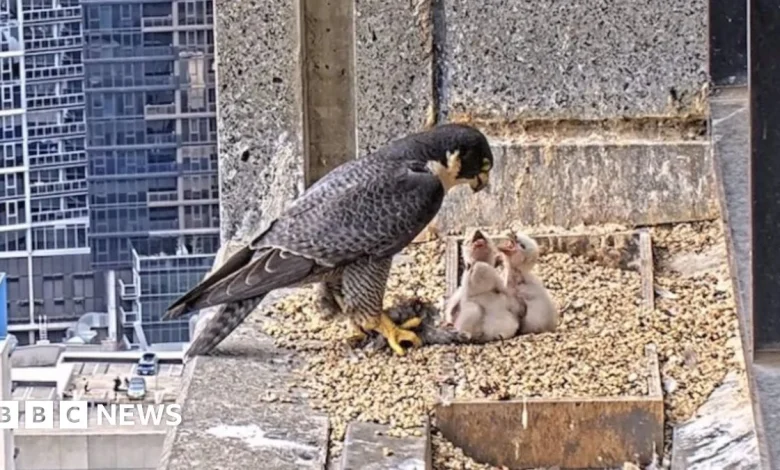‘Nestflix’: the peregrine falcon livestream that has Australians glued to their screens

Over the years the nest has been inhabited by six or seven different pairs of falcons, possibly more. The piece of central Melbourne real estate is “highly prized” by the birds, Dr Hurley says. “There’s a guarantee of hot and cold running pigeons and sparrows all year round. So food’s laid on for them.”
This, and the fact that peregrine falcons are extremely territorial – the closest they’ll nest to each other is about 1.6km – has led to some spectacular fights over the nesting site with “floaters” – peregrines who haven’t paired off or established their own territory – launching raids.
In 2022, drama ensued when a male falcon (described as “wimpy” by Dr Hurley) was replaced by a younger bird halfway through the incubation period after a weeks-long battle.
The older male was almost certainly killed by the “step-father” who was “rubbish” at his new incubation duties, says Dr Hurley, although he notes that at least he didn’t eat the chicks when they hatched as has been known to happen and did in fact provide them with their first feed.
“People started referring to him as the dad that stepped up,” says Ms Humrick.
Then in 2023, the resident female falcon appeared to have sustained brain damage after getting “beaten up” by another female. “She retained the territory for a couple of weeks but she was standing next to the eggs all night one night in winter so she was clearly not alright,” says Dr Hurley. There were no chicks that year.
Years earlier another female falcon was killed in a seven-hour fight that was so loud the building managers called Dr Hurley.
Dr Hurley emphasises that these behaviours are natural and has rejected entreaties from falcon watchers to intervene. “These things kills other birds for a living, that’s their specialty and when they’re taking over nests there’s no prisoner abuse scandal, they just kill each other.”
Peregrine falcons, which were once nearly wiped out in Australia due to the use of pesticides in agriculture, have staged a recovery since the 1980s when DDT and other chemicals were banned.
The birds – known as the fastest animals on earth, reaching speeds of up to 389km/h – are now to be found in almost every major city across the country, where tall buildings mimic the cliffs they prefer in nature.





